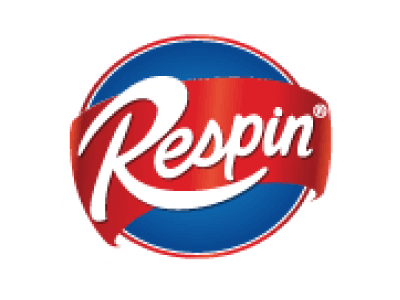Therapy Worksheets
Your team members would feel able to have those difficult conversations with you because they’d be confident that you’d listen and take their concerns on board. 77% of leaders think the communications they share give employees the context they need to do their jobs well. When employees are uncertain about what they need to do — and why — they feel less confident in their roles and become less productive. You also get employees pulling in different directions because they don’t understand the company goals that guide their work. Poor communication gets in the way of productivity in other ways, too.
Every single communication must be understood in the context of that larger flow of information. Therefore, listening is just as important as speaking when it comes to communicating successfully. How you say something can be just as important as what you say. As with other nonverbal cues, your tone can add power and emphasis to your message, or it can undermine it entirely. Before entering into any conversation, brainstorm potential questions, requests for additional information or clarification, and disagreements so you are ready to address them calmly and clearly. Before a performance review, for instance, prepare a list of concrete examples of your employee’s behavior to support your evaluation.
Follow Us On Social Media
Moreover, it’s essential to consider the underlying reasons behind your apprehension. Is it rooted in a fear of judgment, a lack of confidence in your abilities, or past negative experiences? Exploring the deeper layers of your communication apprehension triggers can unveil valuable insights that pave the way for targeted solutions. One psychological factor that contributes to communication apprehension is the fear of failure. Individuals who have experienced past failures in communication, such as being misunderstood or ridiculed, may develop a fear of repeating those experiences. This fear can create a vicious cycle where individuals avoid communication situations altogether, further reinforcing their apprehension.
Understand Your Anxiety
And now that marijuana is legal in many places (for those over 21) and vaping is an option, it’s easier than ever to smoke — on the street, at home or at school — without adults being aware of it. Teenagers who are anxious (not unlike adults who are anxious) may use recreational drugs, especially marijuana, as a way of coping with their discomfort. It’s self-medication, notes Dr. Bubrick, and the reality is, in the short term, it works. It does shut off the worry part of your brain.” But it’s a poor coping mechanism in the longer term, because the anxiety persists and the teenager becomes dependent on the substance. Younger children are prone to be anxious about external things — like animals or insects, the dark, monsters under the bed, or something bad happening to mom and dad.
Open communication isn’t something that always happens organically within an organization. Leading by example and creating a comprehensive communication strategy will help. But it’s likely that your people would benefit from communication skills training. This leads to more meaningful interactions and stronger workplace relationships. A trusting company culture communicates more openly — and open communication fosters workplace trust. When people are trusting of one another, they’re more likely to show up as their authentic selves.
To create this type of communication within your company culture, it helps to understand the four foundational principles of open communication. Make open communication a key part of your communication strategy and you clarify expectations. Managers transparently share goals and targets — and give the required direction. The desired employee behaviors are recognized and reinforced. In the workplace, open communication means sharing information honestly and transparently at all levels of the organization. Employees are encouraged to share their feedback, opinions, and ideas.
It is often that they never had the full picture to begin with. Miscommunications in close relationships can feel especially painful, not because the content is confusing, but because the emotional stakes are high. Familiarity can create a powerful illusion of understanding. In long-term relationships, it is common to believe that another person can finish your sentences, read your mood without explanation, or follow your train of thought without needing context. This kind of closeness can feel comforting, but it also comes with a hidden risk.
Breaking this cycle starts by understanding what triggers your fear and addressing it head-on. When your anxiety is naturally lower, you’re more likely to have positive interactions. Gradual social exposure works better than diving into the deep end. Set achievable goals that build confidence incrementally.
And some teens who weren’t anxious children develop adolescent-onset kinds of anxiety, including social anxiety and panic attacks. But building and mastering effective communication skills will make your job easier as a leader, even during difficult conversations. Taking the time to build these skills will certainly be time well-spent. There are many specialized problem-solving techniques and methods in fields such as science, engineering, business, medicine, mathematics, computer science, philosophy, and social organization. The mental techniques to identify, analyze, and solve problems are studied in psychology and cognitive sciences.
Feeling nervous or anxious about public speaking is common, but it also can be motivating. Fear of public speaking is a form of performance anxiety, along with stage fright and test anxiety. As another option, your doctor or other healthcare professional may prescribe a calming medicine that you take before public speaking.
Furthermore, pay attention to the physical sensations that accompany your emotional responses. Do you experience a racing heart, sweaty palms, or a knot in your stomach? These physiological reactions can offer clues about the intensity of your apprehension and serve as indicators for implementing calming techniques to manage stress levels effectively. Failures in communication can lead to withdrawal, but it’s important not to retreat into your own world permanently.
Making open, honest communication part of company culture — and finding appropriate tools to support effective communication — brings lots of benefits for an organization. If your fear persists or feels paralyzing, consider reaching out to a therapist or counselor. Cognitive-behavioral therapy (CBT) specifically targets anxiety and helps you develop healthier thought patterns.
Too many people try to muddle through and do their best to overcome issues that they never really get to grips with. If it’s at all possible in your circumstances, therapy is 100% the best way forward. Every time a judgmental thought creeps into your mind, challenge it by looking for something positive about the person in question. Oftentimes, if you are yourself, people will judge you because they are jealous.
If you learn to value the mistakes you’re making and see it as a part of your English learning journey, you might not be so afraid to make them in the first place. Check out our article on how to find a conversation partner in English for ideas on finding a language exchange partner. I’ve previously given a big list of activities to improve your English speaking if you don’t have anyone to practise with. The resources below were recommended for supporting mathematical oracy by teachers in the Twitter chats. Generic sentence starters can help give a structure in which children can express their ideas.
Each small success builds confidence for the next challenge. Acknowledging progress reinforces positive associations with voice chatting. Most people appreciate vulnerability and nervousness because it makes you human. This creates natural conversation starters and shared experiences. By the time you speak, you’ll know the community and feel prepared to contribute. You’ll feel like part of the group when you finally unmute.
They’re also less likely to leave your company for a role elsewhere. But open communication helps your organization to run more smoothly and successfully. Here are all the ways open, honest communication benefits your business. You’ve already taken the first step just by searching for and reading this article. The next best thing is to implement everything you’ve learned in this article by yourself.
Hard conversations come with the territory of meaningful relationships and meaningful impact. They are part of the work on a personal and professional level. When approached with care and preparation, they offer opportunities for growth, trust, understanding, and even repair.
Also widely researched are the mental obstacles that prevent people from finding solutions; problem-solving impediments include confirmation bias, mental set, and functional fixedness. By implementing these strategies, you can maintain more engaging and meaningful conversations, even when dealing with social anxiety. Remember, practice makes perfect, and each conversation is an opportunity to improve your skills and build confidence. Overcoming the fear of talking to people isn’t a one-time fix—it’s about building habits that strengthen your mental resilience over time.
Open communication makes your employees aware of one another’s preferences, communication styles, challenges, and vulnerabilities. When implemented in the right way, it also shows them that their peers accept and respect them for who they are — and what they bring to the team. Employees who get enough information to do their job well are 2.8 times more likely to be engaged with your organization and their work. This means they’re more likely to be loyal to your organization and to go above and beyond their required responsibilities. Happy employees are 12% more productive than their unhappy counterparts.
- So you struggle to tap into their valuable customer knowledge.
- Employees are encouraged to share their feedback, opinions, and ideas.
- We just assume that when someone judges us, they are pinpointing something they don’t like about us.
- You can use online language learning forums, chat rooms, or message boards.
Participants were often unable to view the object in a way that strayed from its typical use, a type of mental set known as functional fixedness (see the following section). https://www.orchidromancereview.com/ In addition to its use for finding proofs of mathematical theorems, automated theorem-proving has also been used for program verification in computer science. In 1958, John McCarthy proposed the advice taker, to represent information in formal logic and to derive answers to questions using automated theorem-proving. Your donation powers the future of medicine and helps save lives. It’s also thought that positive and optimistic people tend to live healthier lifestyles — they get more physical activity, follow a healthier diet, and don’t smoke or drink alcohol in excess. Get a demo of the mobile-first employee experience platform trusted by the world’s top brands.







